Aware that big city authorities are imposing their own restrictions on vehicle emissions, and under pressure from customers to minimise their environmental impact, van and truck fleets are casting around for ways to clean up their act.
Among companies at the forefront of this movement is parcels giant DPD. Earlier this year it become the first UK operator to acquire the latest battery-powered Mercedes-Benz eVito van.
Ten long-bodied versions of the 3.2-tonner are going into service in London, where DPD started operations from its first fully-electric final-mile delivery centre in Westminster in late 2018. The company is planning to set up a further eight all-electric micro depots in the capital and establish a fleet of battery-powered vehicles to operate out of key locations nationwide.
DPD’s decision to set up so many all-electric depots should come as no surprise given the advent of the Ultra-Low Emission Zone (ULEZ) in central London back in April. From October 2021, the zone, which is in force 24/7, will be expanded to encompass the area bounded by the North and South Circular roads.
Electric vans can claim exemption from ULEZ charges.
DPD is also trialling battery-powered Fuso eCanter 7.5-tonners in London, as are Wincanton and Hovis; nine trucks in all. Further afield, last autumn saw eight electric 26-tonne 6x2 rigid MAN eTGMs plus a 4x2 eTGM tractor unit go on trial with a cross-section of operators in Austria, including retailers and a brewery.


Range still restricted
Range remains a drawback. The DPD eVitos can only travel 93 miles before they need re-charging; and while eVito’s range is supplemented by recuperative energy technology, it is shortened if the van is run fully-laden, admits Mercedes.
The Canters are limited to no more than around 60 miles.
At more than 120 miles with 12 lithium-ion batteries fitted, the maximum range of an eTGM 26-tonner is a bit more generous; but if you tried to drive it from London to Cardiff, you would run out of power before you reached the Severn Crossing.
When deploying such vehicles on urban and suburban distribution work, range becomes less of an issue. DPD points out that one of its eCanter drivers may cover less than 30 miles in a full day’s shift mainly due to London’s traffic congestion.
It should not be forgotten that driving rain, strong winds and icy winter weather can reduce the distance a vehicle can travel before it has to be plugged in again.
So can fitting an electric refrigeration unit or a tail-lift. Both of them will draw power from the traction batteries and may have to be supported by batteries of their own, adding cost and weight.
“We’re looking at a tail-lift with a separate battery which is trickle-charged from a solar panel on the vehicle’s roof,” says James Bligh, national sales manager, specialist assets, at Hitachi Capital Vehicle Solutions.
Meanwhile, DPD is delivering a programme of product-specific driver training with support from Mercedes-Benz.
Torque about driving differences
With all the torque available instantly, driving an electric van is not the same as driving a diesel. Fleet drivers who exploit the performance on offer to the full are likely to end up stranded in the middle of nowhere with a flat battery.
Then the time it takes to recharge the traction batteries fully should be borne in mind; six hours if you are running an eVito.
Fast-charging facilities are available – plug an eCanter’s lithium-ion battery pack into one and it can be brought from 0% to 80% of its capacity in an hour – but speed is relative, and they still take longer than the few minutes it takes to replenish a diesel tank. It requires a new mindset of filling a little but often, constantly topping up the charge.
A big plus-point of going electric is that the power you use to go a given distance costs significantly less than the diesel you would be burning.
BP-owned electric vehicle charging network Chargemaster calculates that the electricity used to propel a battery 7.5-tonner for a mile costs from 10p to 17p. Run the same truck on diesel and the fuel will cost you closer to 30p.
 Battery vehicles do not suffer from cargo space loss these days because the batteries tend to be mounted under the cargo bed or beneath the bonnet. The burden they impose may reduce payload capacity, although the reduction is not always that great – an electric Renault Kangoo Z.E 33, for instance, only carries 25kg less than its diesel counterpart.
Battery vehicles do not suffer from cargo space loss these days because the batteries tend to be mounted under the cargo bed or beneath the bonnet. The burden they impose may reduce payload capacity, although the reduction is not always that great – an electric Renault Kangoo Z.E 33, for instance, only carries 25kg less than its diesel counterpart.
The Government has decided to compensate operators for any payload lost by permitting anybody with a car driver’s licence to drive a goods vehicle powered by an alternative fuel grossing at up to 4.25 tonnes. If they want to drive a vehicle using a conventional power source the limit is 3.5 tonnes unless they passed their car driver’s test prior to 1 January 1997, and can claim grandfather rights.
The O-licence threshold is set at 4.25 tonnes for alternatively-fuelled vehicles, too, rather than 3.5 tonnes.
Although the price gap is narrowing, electric vans and trucks still cost considerably more to buy than their diesel stablemates. “An electric truck is still twice the cost of a diesel,” says Bligh.
To help bridge the gap, the Government has for some time been offering a plug-in van grant which covers 20% of the purchase price up to a maximum £8,000. Operate in London, and the total cost of ownership model already makes sense. Elsewhere, the gap to diesel is closing rapidly. The experiences of the likes of Centric show that low SMR costs and better than forecast residual values are making electric vans a viable financial proposition.
In 2016 the Government extended the grant to cover trucks.
The initial 200 to go into service will attract a grant of up to £20,000 apiece, and the fund had yet to be exhausted at the time of writing. Once it is, the grant will be offered on the same terms that apply to vans.
Electric commercial vehicles require recharging and the paucity of suitable, accessible charging points – especially so far as trucks are concerned – and the wide variety of payment schemes pose challenges for fleets.
Installing charging posts at a business’s own premises can set it back anywhere from £2,000 to a cool £1m or more, says Chargemaster.
Much depends on how many vehicles it needs to charge, how rapidly, how much fleet management data it wants the posts to generate and – crucially – whether the depot’s power supply needs a major upgrade.
With no engine to service, electric vans and trucks cost less to maintain than diesels.
However, the cost of replacing the battery pack if that proves necessary remains a concern.
Fuso has responded by warranting eCanter’s pack for 10 years, while Renault is planning to introduce a service whereby individual cells can be repaired or replaced to prolong the battery’s life.
Residual values (RVs) are not the issue they might have been in the past, at least so far as battery vans are concerned, says Shoreham Vehicle Auctions managing director, Alex Wright. Demand is rising for used examples, he reports, and prices are getting stronger.
“We’re seeing dealers buy stock then confidently sell it to small businesses,” he observes. “Leasing companies can now underwrite electric vehicles confident of their value in three to four years’ time, which makes monthly rentals more competitive.”
The message has yet to strike home with some hire fleets. Many remain cautious, quoting rental rates up to twice those for diesel vans.
The choice of electric vans and trucks on offer remains restricted, but is gradually improving.
Electric versions of Citroën’s Relay and Peugeot’s Boxer made their global debuts at this year’s Commercial Vehicle Show, an electric Mercedes-Benz Sprinter will arrive on this side of the Channel in the first quarter of next year, and an electric Ducato is due here in 2020, too.
Moving up in weight scale, Renault Trucks intends to launch battery Range D and D Wide rigids in the UK in 2020 at 16 and 26 tonnes respectively.

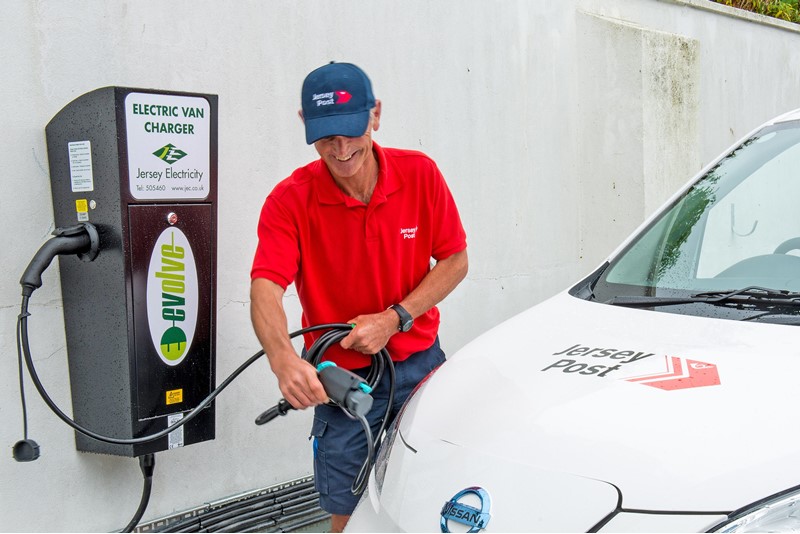 Low Carbon Vehicle Partnership (LowCVP) and Cenex (Centre of Excellence for Low Carbon and Fuel Cell technologies) argue that what matters when choosing a vehicle powered by an alternative fuel is TCO (total cost of ownership). They calculate that a battery Nissan e-NV200 can deliver a £3,688 wholelife cost saving over five years at an average 15,000 miles a year compared with its diesel equivalent.
Low Carbon Vehicle Partnership (LowCVP) and Cenex (Centre of Excellence for Low Carbon and Fuel Cell technologies) argue that what matters when choosing a vehicle powered by an alternative fuel is TCO (total cost of ownership). They calculate that a battery Nissan e-NV200 can deliver a £3,688 wholelife cost saving over five years at an average 15,000 miles a year compared with its diesel equivalent.
Among the cost advantages it enjoys is a 0% vehicle excise duty rate.
Using electric trucks on long-haul work remains impractical because of the weight and cost of the battery pack that would be required. So, operators who wish to go electric, but suffer from range anxiety, might consider opting for hybrid or range-extended technology as a half-way house.
Fuso Canter is also marketed in Eco Hybrid guise, with a 150PS diesel engine which works in parallel with a 40kW electric motor.
It moves away from rest using electric power only, then switches to a combination of diesel and battery once it has reached 6mph. An onboard computer decides how much power should be supplied from each source.
“Electric vehicles are probably the solution for urban work, but going hybrid makes sense if you need to travel a bit further,” says Greg Harris, global lead on electrification strategy at automotive engineering and development consultancy Horiba Mira.
Premium prices
Hybrid and range-extended trucks come at a premium price.
A range-extended 10-tonner is liable to cost £1,900 a month on a repair and maintenance lease compared with £1,450 for a standard diesel based on 300,000 miles over seven years. But the range-extender could cut your fuel bill by around £600 a month.
There are other alternatives to consider.
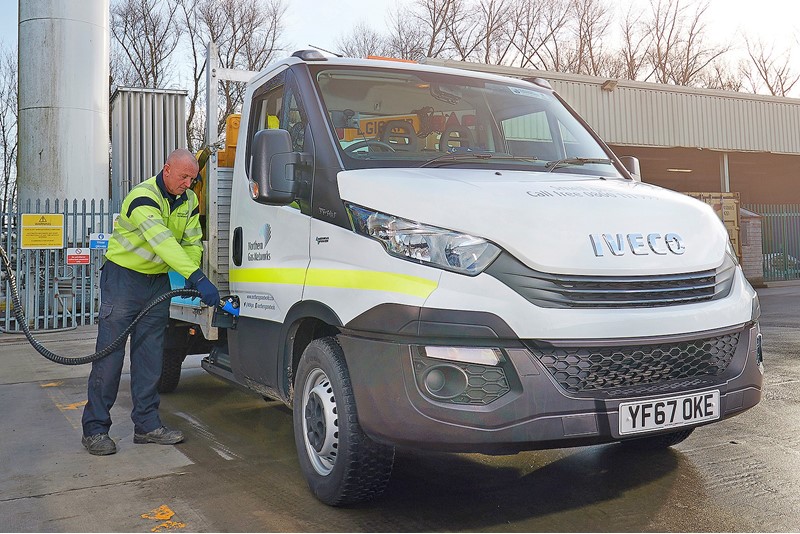
Iveco, in particular, has been energetically promoting the virtues of compressed natural gas (CNG) and liquefied natural gas (LNG) for medium- and long-haul work.
Gasrec, which operates natural gas refuelling stations, points out that natural gas is approximately 40% cheaper than diesel and emits 70% less NOx and 90% fewer particulates. CO2 emissions are down by 15%, it adds, rising to 90% if you opt for biomethane, which is generated by gas emitted from landfills among other renewable sources.
Switch from diesel to gas and the average noise level of your engines will fall by 3dB; an important consideration if you deliver at night.
However, gas-powered CVs are around 20% more expensive than diesels, and there are question marks over their second-hand value.
They can still come out ahead from the TCO viewpoint, contend LowCVP and Cenex. The two calculate that a CNG Iveco Daily 3.5-tonner covering 25,000 miles a year over six years can deliver a £1,912 saving compared with its diesel counterpart.
That is despite its RV will being 32% lower.
A steady stream of high-profile fleets are embracing gas, with John Lewis announcing it intends to replace all its diesel heavy trucks by 2028 with 500 fuelled by biomethane. It already has 61 biomethane models in service.
Typical range between refills? Around 500 miles.
Gasrec has nine gas refuelling stations while CNG Fuels runs two, with plans for five more this year and a further eight in 2020. Operators who wish to install their own could be contemplating a bill of from £300,000 to £1.2m dependent on size.
Hitachi is able to put together funding packages that will cover the cost of any charging or refuelling infrastructure that is required as well as the vehicles, says Bligh.
It can also help operators determine which types of alternative-fuel vans and trucks are best suited to which application.
“Remember that if you go the electric or gas route you won’t have to worry about AdBlue, and you won’t have to worry about fuel theft either,” comments Bligh.
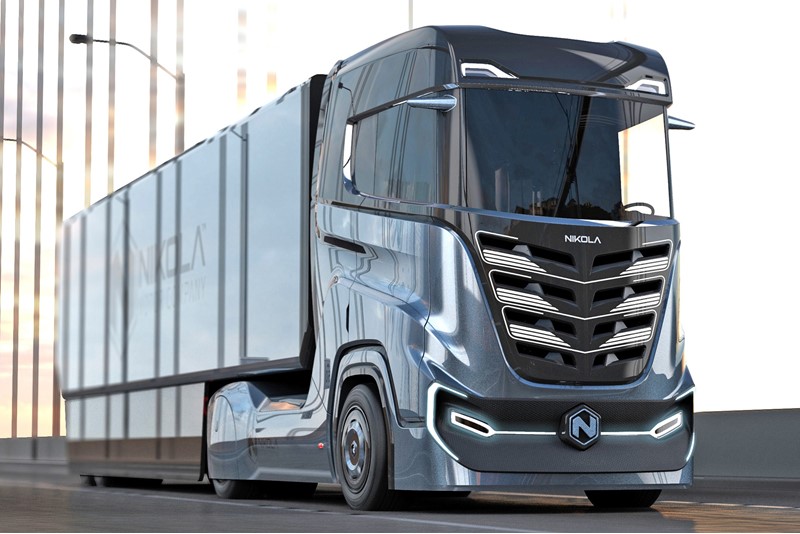 Hydrogen represents yet another gaseous option, with US-based manufacturer Nikola planning to put tractor units equipped with hydrogen fuel cells into production in 2022-23. It aims to market them in Europe.
Hydrogen represents yet another gaseous option, with US-based manufacturer Nikola planning to put tractor units equipped with hydrogen fuel cells into production in 2022-23. It aims to market them in Europe.
The only emission a hydrogen fuel cell produces is water vapour, but it requires a lot of electricity to produce hydrogen and only a handful of refuelling sites in the UK have it available.
Vehicles fitted with fuel cells remain eye-wateringly expensive. A number of buses are in service in the UK that use the technology, and a 12m-long single-decker fitted with it will set one back a whopping £560,000.
An electric bus of the same size costs closer to £360,000.
Diesel engines still have a major role to play, despite their critics. They are 10% more efficient than their CNG-powered equivalents. Detailed changes to their design are helping to cut CO2 and fuel usage.
Best-known for its involvement in engine braking technology for heavy trucks, Jacobs Vehicle Systems has come up with CDA (cylinder de-activation).
The latest incarnation of an idea that has been around for some years, it improves economy by selectively preventing the intake and exhaust valves from opening on designated cylinders. When combined with the elimination of fuel injection, the engine operates with the diesel consumption of a smaller one.
Emissions are reduced, says Jacobs, especially at lower loads, because CDA achieves higher exhaust temperatures in the cylinders that are still operating. That makes it possible to maintain optimal after-treatment temperatures.
The arrival of fuels such as GTL (gas-to-liquid) is helping to mitigate the environmental impact of diesel engines.
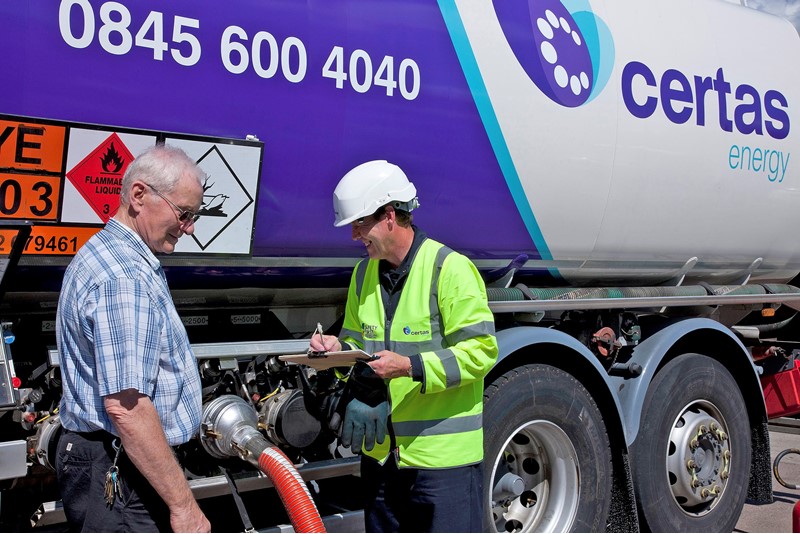 Modern engines can run on it without modification, and it can bring significant environmental benefits. Shell GTL can reduce NOx by up to 37% and particulates by as much as 90%, says Certas Energy, which markets it in the UK.
Modern engines can run on it without modification, and it can bring significant environmental benefits. Shell GTL can reduce NOx by up to 37% and particulates by as much as 90%, says Certas Energy, which markets it in the UK.
It costs several pence per litre more than standard diesel, but the final invoice depends on how much a fleet orders.
It may also lead to lower fuel usage.
“Certas Energy supplies Shell GTL to Brakes UK, a nationwide food transportation business,” says Certas product manager for fuels and services, Rebecca Swann.
“It has reported a fuel economy improvement of 0.4mpg since making the change, and none of the 80 vehicles involved has required a diesel particulate filter regeneration.”
HVO (hydrotreated vegetable oil) is also being used as a direct replacement for conventional diesel although, again, it costs more.
“It’s made from renewable and sustainable raw materials and its key environmental advantage is that greenhouse gas emissions are reduced by up to 90% compared with mineral diesel,” says Richard Hutchinson, research and development manager at supplier Crown Oil.
“Data from 450 heavy-duty diesel engines tested under city driving conditions shows that particulate matter is down by up to 30%, unburned hydrocarbons are reduced by up to 30%, carbon monoxide by up to 25% and NOx by up to 10%.”
Not as spectacular as going zero-emission, agreed. But benefits that are still worth having.



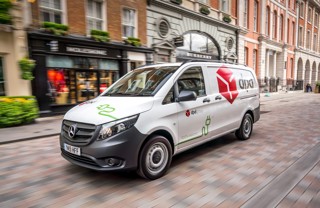

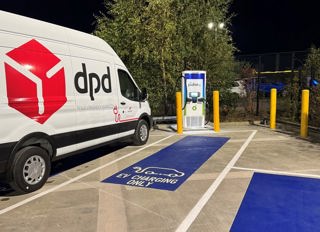













Login to comment
Comments
No comments have been made yet.